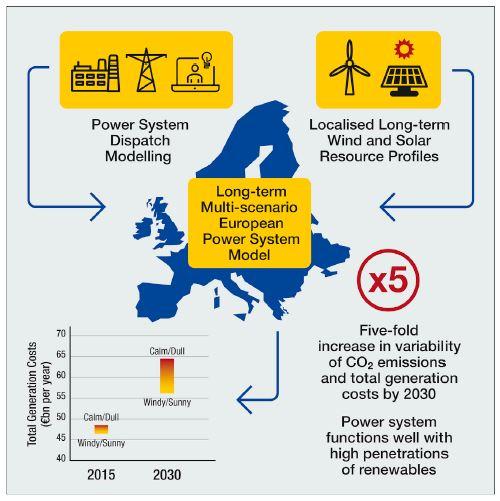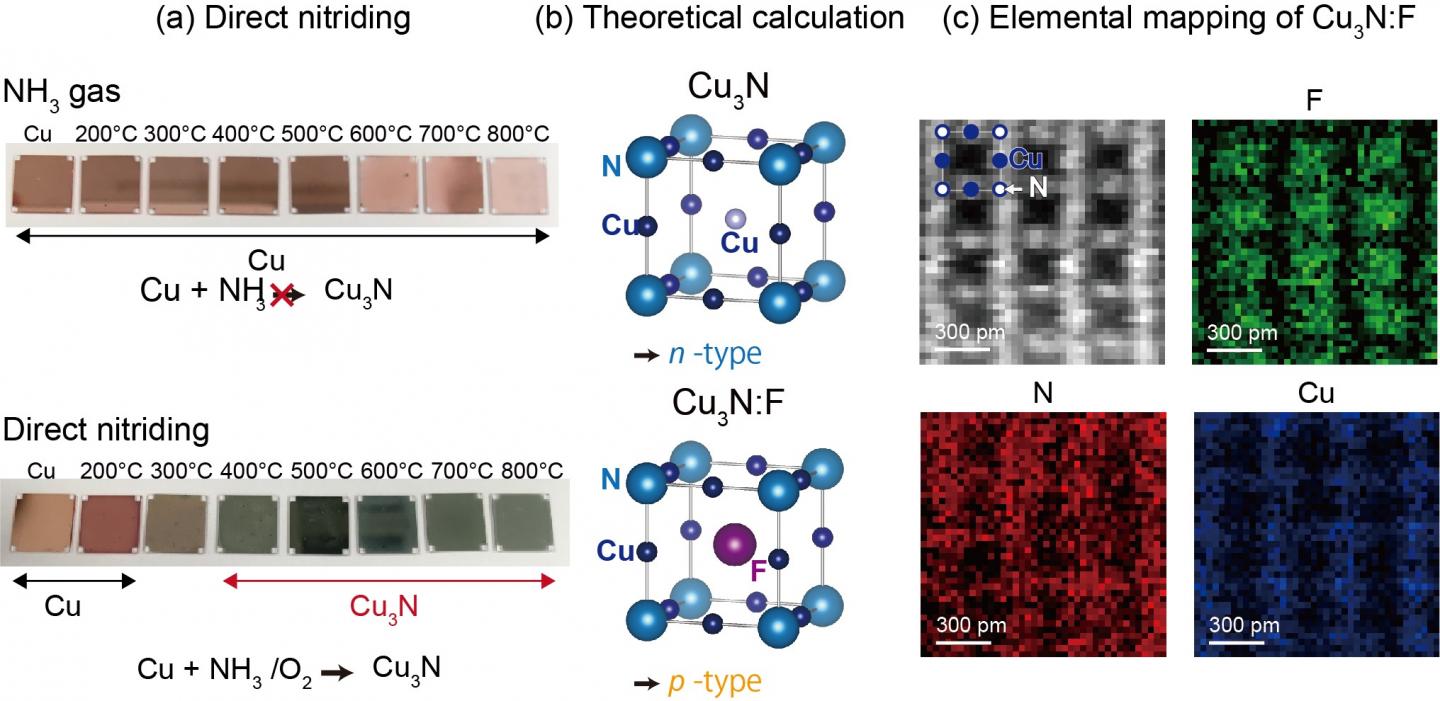
This graphical abstract shows the impact of long-term weather variability on the operation of the European power system and how this scales with uptake of wind and solar power out to 2030. We find that ambitious decarbonization leads to much greater influence of long-term weather patterns, with a 5-fold increase in operational variability by 2030. Several relevant metrics can be reasonably approximated by linear functions of variable renewable penetration, providing a shortcut for estimating the impacts of intermittency.

(a) This is a copper and Copper Nitride. (b) Theoretical Calculation for P-type and N-type Copper Nitride. (c) Direct Observation of Fluorine Position in Fluorine-doped Copper Nitride. (a) An image of thin film copper plates before and after reacting with ammonia and oxygen. Copper metal has been transformed to copper nitride. (b) Copper insertion for an n-type semiconductor and fluorine insertion for a p-type semiconductor. (c) Nitrogen plotted in red, fluorine in green, and copper in blue. Fluorine is located at the open space of the crystal as predicted by the theoretical calculation.